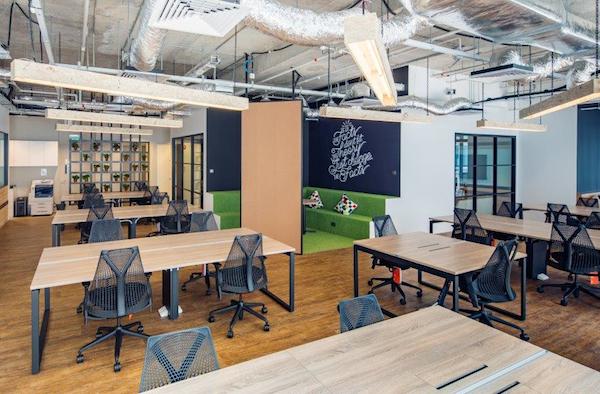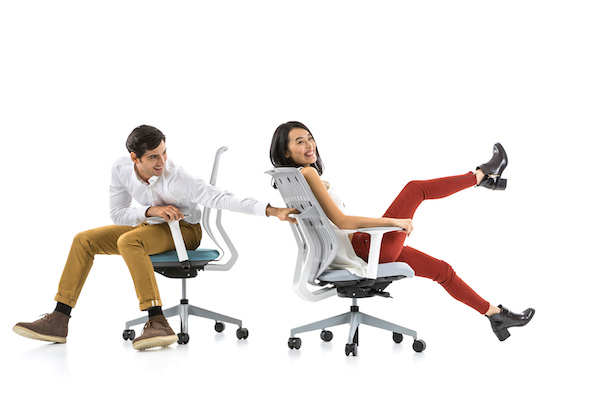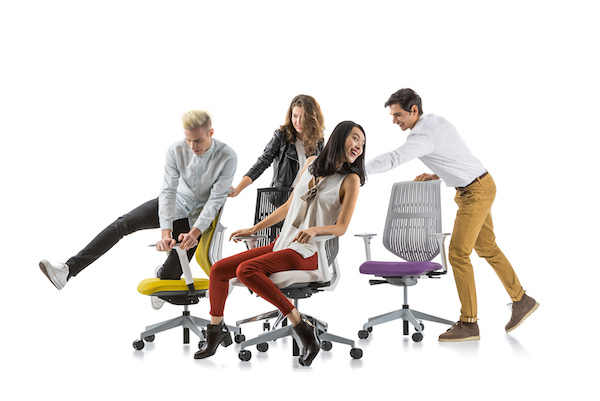The world’s future leaders and CEOs aren’t interested in the traditional, boxy office cubicle and career path. Here’s a glimpse of what it takes to keep Generation Y engaged and happy at work.

indesignlive.sg
July 18th, 2016
Pictured above is the cafe area at Indeed Tokyo’s offices, designed by Cosmos More. This project came second for Workspace Design in Herman Miller’s 2016 Liveable Office Awards
Millennials are set to dominate the workforce by 2020, and with 71 percent of them either not engaged or actively disengaged at work, according to a 2015 Gallup Poll, things aren’t looking good for companies looking to attract and retain the best talent. The solution is not as simple as offering better financial rewards, however; while pay is important to Millennials, says a 2016 Millennial Survey by Deloitte Touche Tohmatsu, there are 14 other factors that come into play – including good work-life balance, flexibility, all of which contribute to a “creative and inclusive culture.”
The Deloitte survey looked at 29 markets, and found that open communication and investment in technology were likely to increase job satisfaction among Millennials.
But embracing digital isn’t everything. A recent Pricewaterhouse Coopers (PwC) report said that millennial-friendly environments should also be creative and comfortable. “Millennials expect to work hard, but they don’t want to sit in a bland cubicle all day. They will be drawn to organisations that offer an engaging, comfortable, and stimulating atmosphere that creatively blends work and life,” says the report, which surveyed 4,364 graduates from 75 countries.

Siren Design created a creative, collaborative workspace for JustCo in Singapore. Siren won the Liveable Feature Award at Herman Miller’s 2016 Liveable Office Award
It’s a finding that is reinforced in a whitepaper produced by project management consultancy Merx off the back of a regional survey conducted in conjunction with Indesign Media. “To build a successful brand today, companies need to show a real commitment to the wellbeing of their talent. It is no surprise, therefore, that the leaders in workplace wellness and agility are also the most respected and admired brands of our time,” argues Merx in Wellness in the Workplace.
According to Wellness in the Workplace, 68 percent of respondents said that their company provides some form of ergonomic desk set-up, an area Merx sees as offering plenty of opportunity for companies to improve their brand image in the eyes of current and potential employees. “There is a direct correlation between ergonomics and productivity. If you’re comfortable at a desk, you’re going to work more efficiently,” explains Paul Scroggie, Director, Hong Kong, Macau and PRC, for Merx. “Why wouldn’t an organisation make absolutely sure that ergonomics were factored into their workspace?”
One easy way to introduce ergonomic set-ups into your workspace is via a desk chair that provides comfort and the best possible support for the human body.
Comfort was a key word in the design process for Activity, a chair created by POSH Design Lab (PDL), a Herman Miller company. Activity’s form maximises comfort by following the human spine and mirroring its movements. “We studied how the body moves and how people interact with each other during their daily work,” explains Jack Liang Wang, Head of Design and Development at PDL.

POSH studied how the human body moves when designing Activity
One of the key outcomes of PDL’s research was Activity’s backrest, Activeback™. Made from MPA (Modified Polymite), a material uses on tires and in activewear, the backrest allows for flexibility in those places where the human back needs maximum range of motion, and rigidity where it needs stability.
The backrest may be an exciting innovation for the industry, but it was also the most challenging aspect of the design and production process, says Wang. “No matter how flexible the human body is, it still requires different levels of support at different locations. It’s not enough to simply create a backrest that wraps around the human body; the backrest also needs to show flexibility where the body needs to move and rigidity where the body needs protection.”
In the end, the PDL team came up with an innovative solution to this problem. “The Activity backrest consists of many vertical stripes that echo body movement. The whole platform is curved, yet it also comes with a thickness that gradually decreases from the outer rim to the centre in order to fully wrap, embrace and secure the user’s upper body,” says Wang.

Activity is designed for movement
Along with the backrest, Activity also features a weight-sensitive tilt mechanism that sees the chair adjust to the body automatically. The armrests also contribute to user comfort, “scaling in all dimensions to fit the user’s individual needs,” says Wang.
Along with ergonomics, another factor that contributes to workplace wellbeing and productivity is sufficient sleep. A NASA study of tired astronauts and military pilots found their performance improved significantly after a 40-minute nap: by as much as 34 percent. Their alertness increased by 100 percent, too.
In addition, a British study found in 2008 that naps were the most effective way of getting over the natural slump in activity that happens in the afternoon. This is a part of our biological circadian rhythm, and using naps to deal with it is apparently more effective than more nighttime sleep or caffeine.
Activity has already taken this into consideration: it comes with an optional, add-on headrest that was designed with daytime snoozes in mind. The headrest comes in padded and non-padded versions, enabling the user to snap padding onto the back of the chair at any time for additional comfort – something that’s sure to appeal to the Millennial in search of a workplace that values their wellbeing and that caters to their comfort.

Activity, pictured with the optional headrest
For PDL, Millennial needs were top-of-mind when they were designing the Activity chair. “New ways of working are leading us to cutting-edge environments that promote collaboration, creativity and productivity. Some of the research out there shows that Millennials spend significantly more time devoted to the discussion of new ideas and ways of working,” says Wang. “We believe flexibility helps to build self-empowerment – especially when it comes to where you work. Activity can help you to focus on those precious moments, by not only letting you concentrate on work on your own, but also providing opportunities to collaborate with other colleagues, and therefore spark great ideas any day, any time.”
Watch this video to find out how one user makes Activity work for him.
POSH
poshworkspace.com
Herman Miller
hermanmiller.com/asia
hermanmillerreach.com
A searchable and comprehensive guide for specifying leading products and their suppliers
Keep up to date with the latest and greatest from our industry BFF's!

In the pursuit of an uplifting synergy between the inner world and the surrounding environment, internationally acclaimed Interior Architect and Designer Lorena Gaxiola transform the vibration of the auspicious number ‘8’ into mesmerising artistry alongside the Feltex design team, brought to you by GH Commercial.

Create a configuration to suit your needs with this curved collection.

Channelling the enchanting ambience of the Caffè Greco in Rome, Budapest’s historic Gerbeaud, and Grossi Florentino in Melbourne, Ross Didier’s new collection evokes the designer’s affinity for café experience, while delivering refined seating for contemporary hospitality interiors.

Marylou Cafaro’s first trendjournal sparked a powerful, decades-long movement in joinery designs and finishes which eventually saw Australian design develop its independence and characteristic style. Now, polytec offers all-new insights into the future of Australian design.

On the 22nd of February, the local design scene brimmed with excitement as Unison marked its 10th anniversary by becoming the first MillerKnoll dealer in the Australia and New Zealand region.

Renowned furniture brand Herman Miller recently hosted a unique and exclusive event – ‘A Taste of Herman Miller’ – in Melbourne on February 15, 2024.
The internet never sleeps! Here's the stuff you might have missed

Suitable for applications ranging from schools and retail outlets to computer rooms and X-ray suites, Palettone comes in two varieties and a choice of more than fifty colours.

London-based Carmody Groarke and Paris-based TVK have been announced as winners of a milestone competition for the new Bibliothèque nationale de France conservation centre.